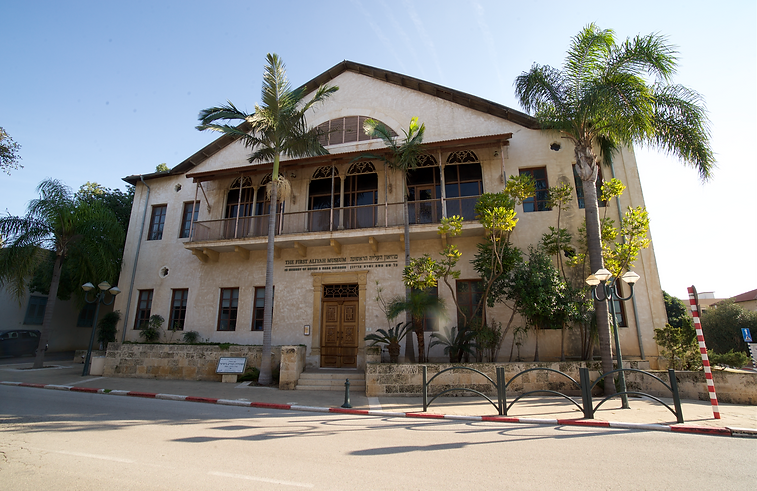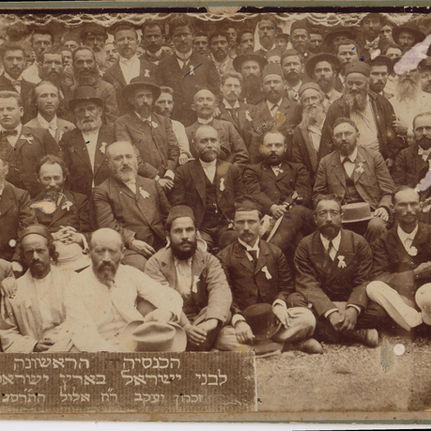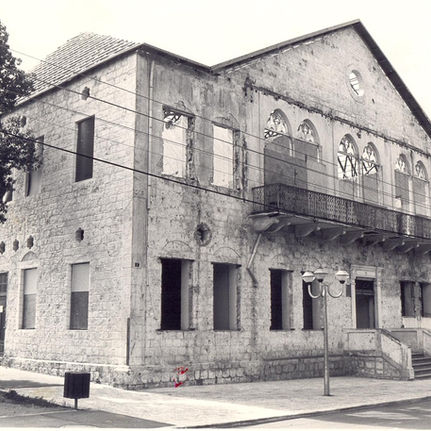

The Museum Building
Our museum is located in what was known as the “Administrative Building” built in 1894 by the Baron's delegates and considered to be the largest and most magnificent in the Land of Israel at the time. It served as a managerial center for all the colonies in the area.
The building had originally two tall stories, with a balcony overlooking the street. On the second floor was a magnificent hall, paved with white and black marble.
In 1903 the momentous national conference called the "First Convention" was organised here. This was the first time in the history of the renewed Yishuv in Eretz Yisrael that all of its advocates gathered to discuss the issues of Zionism. Menachem Ussishkin, a representative of Russian Zionism, came to Palestine to organize the convention just as the Sixth Zionist Congress was arranged in Basel, Switzerland, known as the "Uganda Congress". At the end of that week, Elul 5663, school and kindergarten teachers stayed behind to establish the Hebrew Teachers' Union of the Land of Israel. These gatherings were the first in which women were granted the right to vote.
During WWI, the Ottoman authorities turned the building into a military hospital and mosque.
When they left the country, the building returned to use as a form of congressional building and later as the Zichron Yaakov elementary school.
Between then and its conversion to a museum it was a community center and the local municipality offices
In 1988, the building was declared a "national heritage site."
Its renovation took place in the years 1990-1999.

Illustration from the memoirs of Eli Schied,
a chief official of Baron Rothschild, c. 1899
Renovation
Throughout the restoration process, architect Shimon Shapira was careful to leave the face of the building intact and even repaired the entrance’s impressive original double doors.
Inside, the structure was recreated with a complicated and unique style.
Designer Ori Abramson decided on a minimalistic, symbolic interior to represent the period of the museum’s subject.
Ted Arisohn, who financed the project, dedicated the building to his grandparents, Moshe and Sarah, two of Zichron’s founders.








